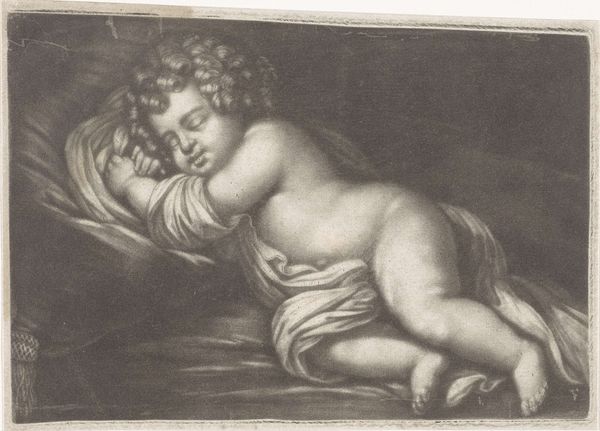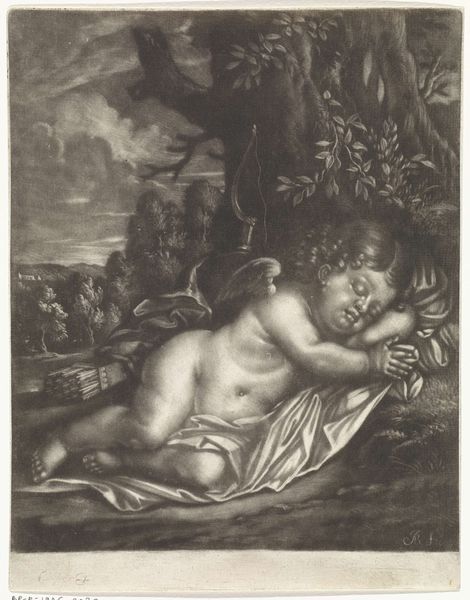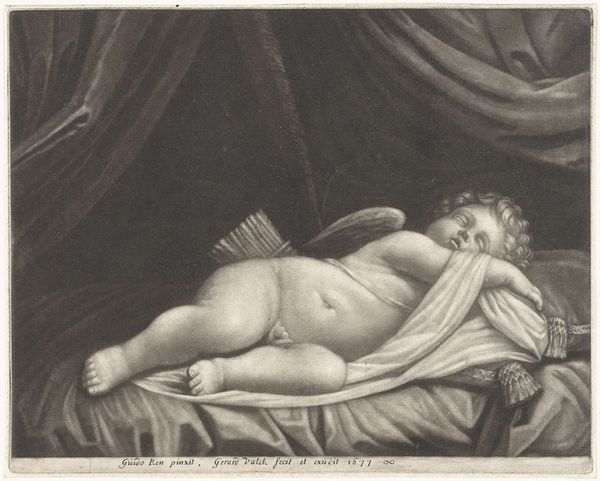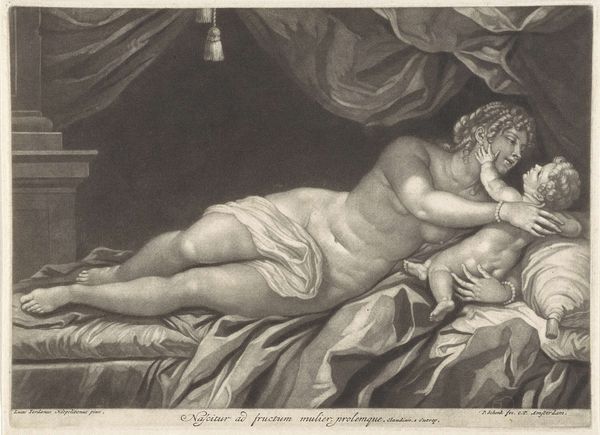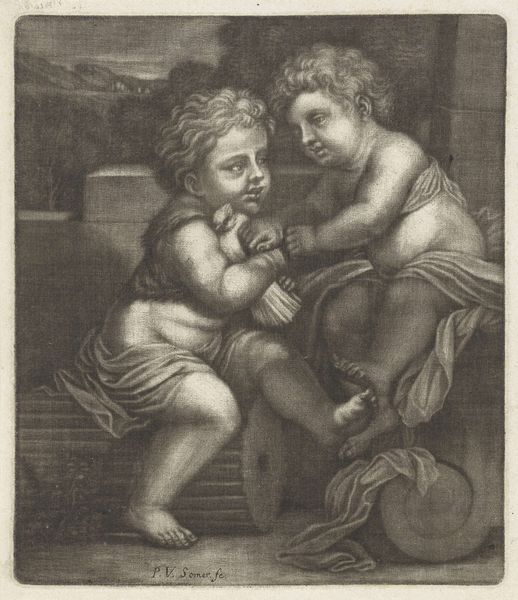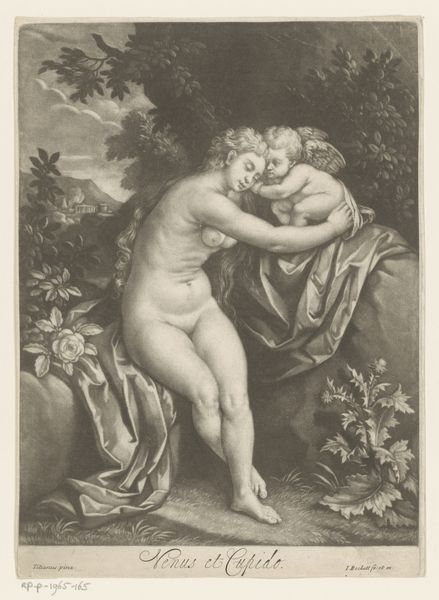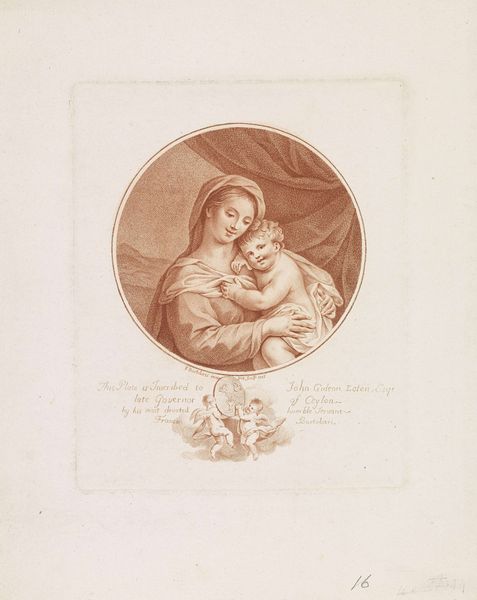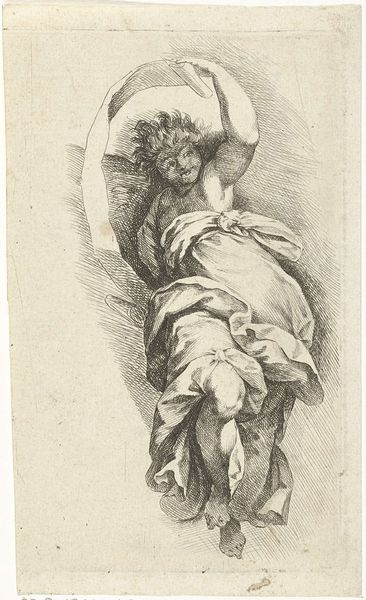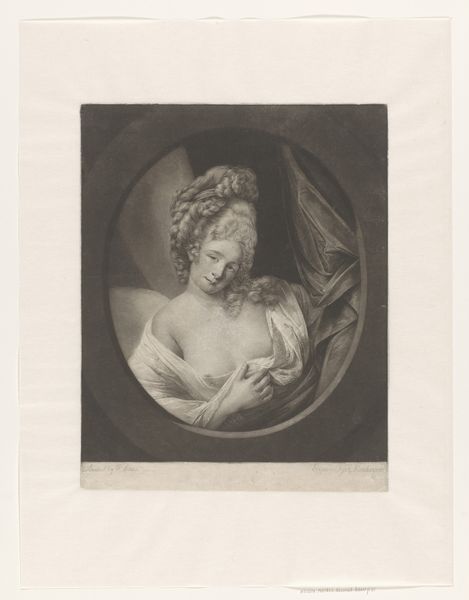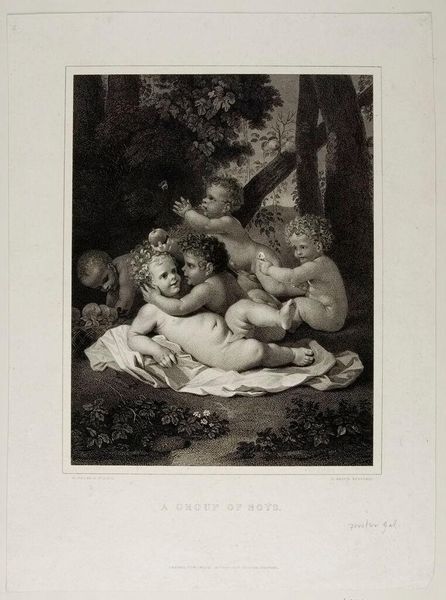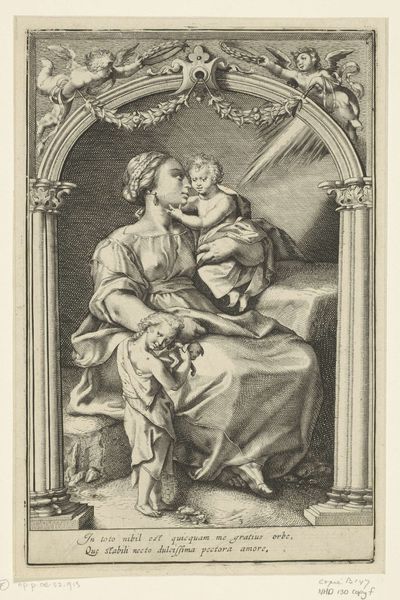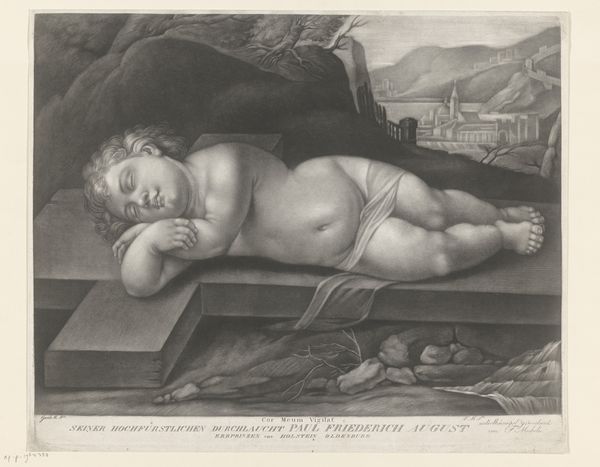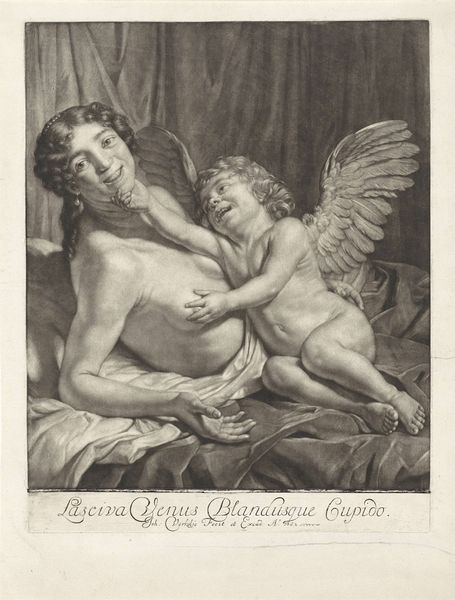
etching, engraving
#
portrait
#
baroque
#
etching
#
charcoal drawing
#
nude
#
engraving
Dimensions: height 196 mm, width 250 mm
Copyright: Rijks Museum: Open Domain
Wallerant Vaillant created this mezzotint, Amor Cupido, sometime in the mid-17th century. Vaillant's choice of the mezzotint technique is significant, because the process of creating the image is particularly labor intensive. The copper plate would have been roughened with a tool called a rocker to create thousands of tiny indentations on the surface. This would allow the plate to hold ink, producing a uniformly dark print. The artist then burnishes or scrapes away the rough surface, in order to create lighter areas, and achieve the desired image. The tonal gradations of the mezzotint lend themselves particularly well to rendering the soft skin of the sleeping Amor, son of Venus and god of love. This print after a painting by Caspar Netscher could be seen as a celebration of artistry, as well as a demonstration of technical skill, but also prompts reflections on the economic systems that made such skilled handwork possible. In essence, the mezzotint technique elevated printmaking to a new level of refinement, blurring the lines between reproducible graphics and the preciousness of unique artworks. It encourages us to look closely at the relationship between art, craft, and commerce.
Comments
No comments
Be the first to comment and join the conversation on the ultimate creative platform.
